How to Build a Duck Nest Box
Wood ducks and other cavity-nesting ducks build nests in abandoned woodpecker holes or natural tree cavities. These ducks will also use a nesting box. Here’s how to create an eggcellent place for feathered friends to raise their young.
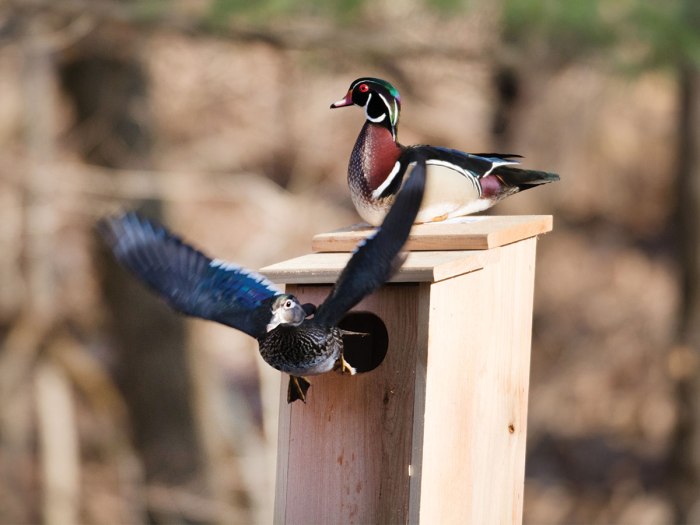
WHAT YOU’LL NEED TO BUILD A DUCK BOX
- Handsaw
- Drill and ½-inch bit
- Jigsaw
- Screwdriver
- Sandpaper
- Pencil
- Measuring tape
- Straight-edge
- Wood screws
- Hardware cloth (optional)
- Untreated cedar wood, 1 inch by 10 inches by 12 feet
- Wood shavings
WHAT YOU’LL DO TO BUILD A DUCK BOX
1. Measure and cut wood to produce the six pieces below. Number the pieces as shown.
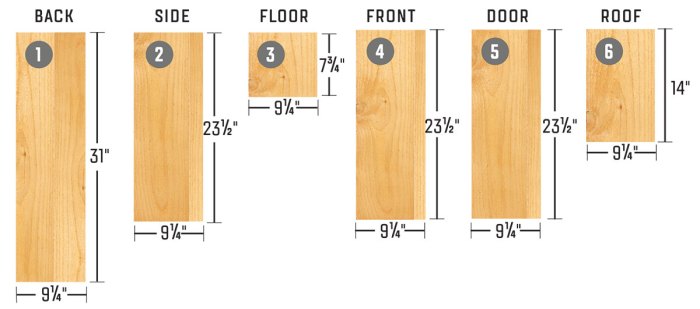
2. Attach the back (1) to the side (2) using four screws fastened from the back of the box.
3. Drill five 1/2″ drainage holes into the floor (3). Attach the floor by fastening two screws through the back and two through the side.
4. Draw the entry hole on the front (4) using a pencil (4 1/2- by 3 1/2-inch oval). Drill a pilot hole and cut out the entry hole using a jigsaw. Proper entry hole dimensions are critical.
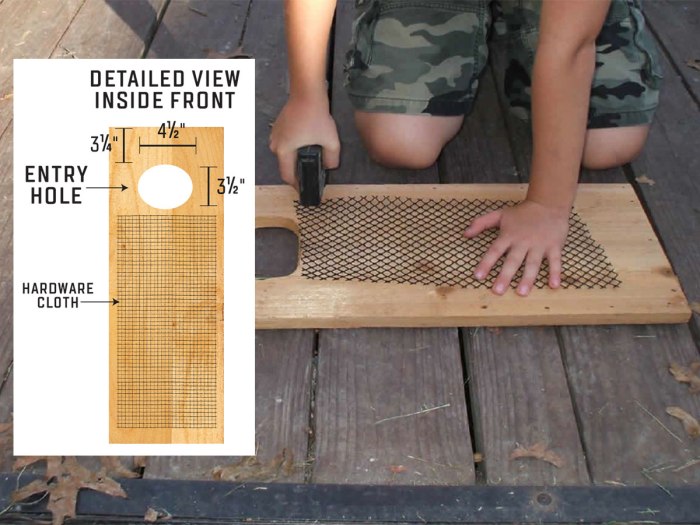
5. Score the inside face of the front (4) with a saw. The horizontal slots will provide toeholds when the ducklings climb out. You can also use hardware cloth.
6. Attach the front (4) using six wood screws.
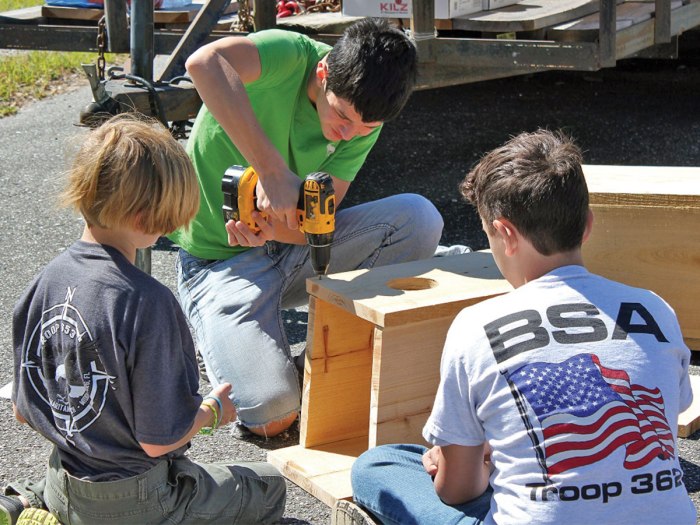
7. Round the top outside edge of the door with sandpaper (5). Fasten the door at the top with one screw from the front and one from the back. The two screws form the hinge and allow the door to open. Pin the door shut with a nail from the front or add a latch.
8. Attach the roof (6) using four screws from the top and three screws from the back. (Be careful not to screw into the door). The box is now ready to install. Put a 4- to 6-inch layer of wood shavings into the box for nesting material. Do not use sawdust.
HOW AND WHERE TO INSTALL A DUCK NEST BOX

Now that you’ve built your nest box, you need to find a good place to install it. Be sure to put the box in a location that will be convenient for monitoring and annual maintenance.
WHERE TO FIND DUCKS: To increase the chances of your nest box being used, it should be located in an area attractive to cavity-nesting ducks. You’ll see these birds using wooded wetlands that contain water year round or, at least, throughout the summer. You’ll also see them using trees along riverbanks and lake shorelines.
MOUNTING YOUR NEST BOX: Nest boxes can be mounted on tree trunks or on steel poles beside the water or above the water.
- Good placement — A dead tree at the water’s edge
- Better placement — A solid dead tree in the water
- Best placement: Boxes on stable poles near standing, flooded, dead trees
Boxes should be placed above typical high water levels and at a height that will allow you to access the box for monitoring and maintenance (about 4 to 6 feet above land or water). Try to keep your box close to the water.
The entrance hole to the box should face the water. Clear an unobstructed flight path to your nest box by removing branches that might be in the way. You can tip the box forward a little bit to help the ducklings reach the entrance.
PREDATOR GUARDS: A predator guard will help to improve the chance of a successful hatch by preventing egg-eating raccoons from entering your nest box. Here’s how to build a predator guard.
NEST BOX MAINTENANCE
Once a bird starts using your box, you’ll likely see many broods raised over the years. Nesting sites for these birds are limited in number. When they find a good nesting site, there is a very good chance they’ll return in following years.
When you put up a nest box you are committing yourself to maintaining that box. Fall and winter are the best times to remove old nesting material, tighten any loose screws and mounts, and add new wood shavings.
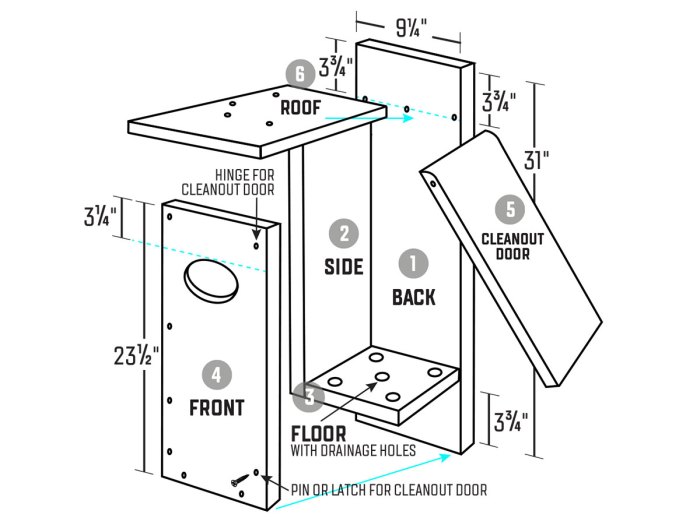
How can I print this pattern? My husband is a Scout Commissioner in Texas.
Thank you, this was so helpful.
good instructions